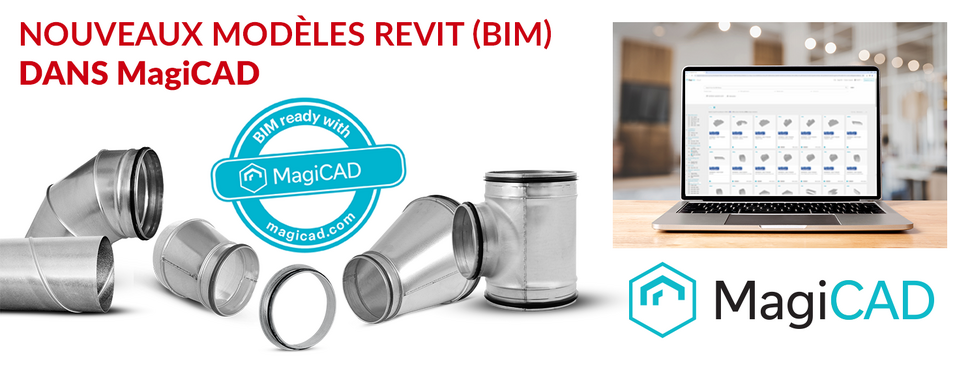
Pour vous faciliter la tâche, nous avons publié les nouveaux modèles Revit (BIM) dans MagiCAD sur notre site web sous SUPPORT -> Design Software -> MagiCAD.
Nous vous attendons :
Nous sommes convaincus qu'une telle mise à jour de nos produits vous permettra de préparer vos projets de manière encore plus rapide et plus précise.
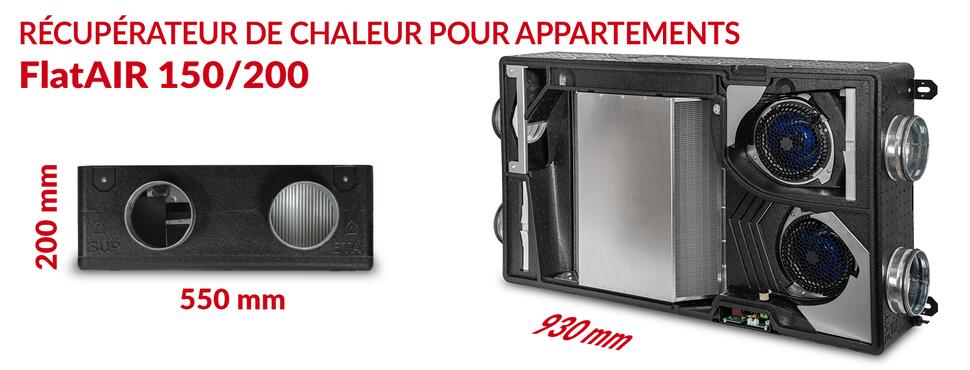
Nos derniers récupérateurs conçus pour les appartements - FlatAIR - seront bientôt mis en vente.
Il s'agit d'unités modernes d'une capacité de 150 et 200 m3/h. Un échangeur de chaleur à contre-courant en plastique (PET) ou un échangeur enthalpique à récupération d'humidité sont responsables de la récupération de chaleur. La hauteur de l'unité n'est que de 200 mm. L'unité est conçue de manière à pouvoir être installée dans un plafond suspendu sans occuper d'espace au sol. Le récupérateur est constitué d'une construction autoportante en EPP, qui se caractérise par sa résistance, sa légèreté et une très bonne isolation thermique et acoustique.
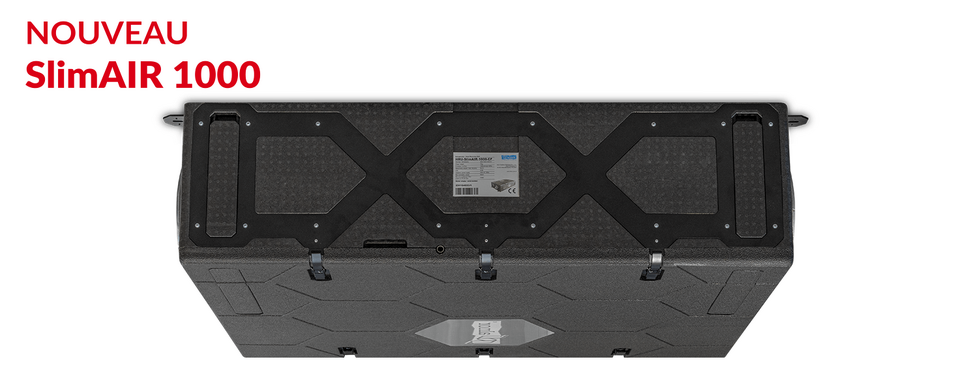
Équipée de ventilateurs fiables et efficaces, la nouvelle unité de traitement de l'air est non seulement efficace, mais aussi extrêmement légère, puisqu'elle ne pèse que 75 kg.
Elle fournit un débit de 1 000 m3/h à une pression différentielle de 100 Pa, tout en consommant un minimum d'énergie.
Sa récupération de chaleur maximale atteint 94 % ! Vous pouvez commander notre SlimAIR1000 avec un échangeur de chaleur à contre-courant PET ou un échangeur de chaleur enthalpique pour une récupération efficace de l'humidité.
Téléchargez la fiche technique et les instructions pour plus de détails !
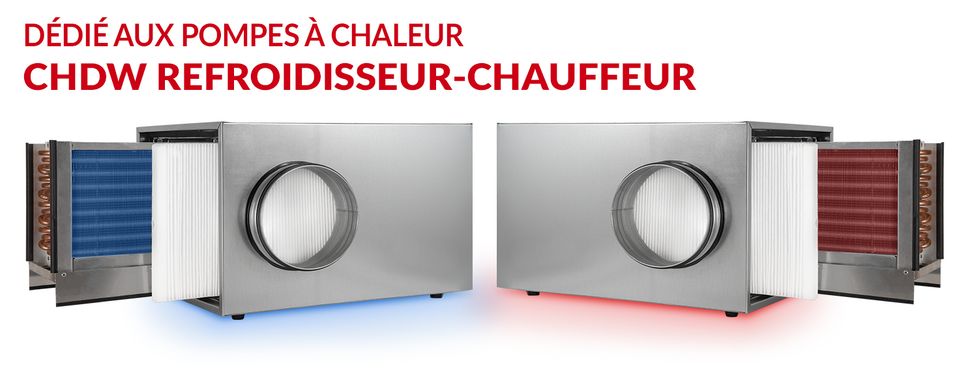
Nous vous invitons à découvrir notre dernière unité refroidissement et chauffage de gaine, une solution avancée de refroidissement et de chauffage des locaux. Deux tailles sont disponibles : 429x560x364 DN160 (DN200 avec filtre) et 429x660x414 DN200 (DN250 avec filtre), avec une capacité de refroidissement de 1,85 kW et un impressionnant 3,20 kW pour la plus grande version.
Sa structure durable, avec une isolation de 24 mm et l'option d'un revêtement en poudre, garantit un aspect agréable et une protection contre la corrosion. La polyvalence du montage, l’accès facile à l’échangeur et la section filtre intégrée font de cette unité un choix idéal pour répondre à différents besoins.
L’appareil fonctionne parfaitement avec les systèmes de récupération et les pompes à chaleur, grâce à des algorithmes intelligents et à la détection des saisons pour une performance optimale.
Ces produits, ainsi que d’autres produits de ventilation et de récupération, sont disponibles dans l’onglet PRODUITS
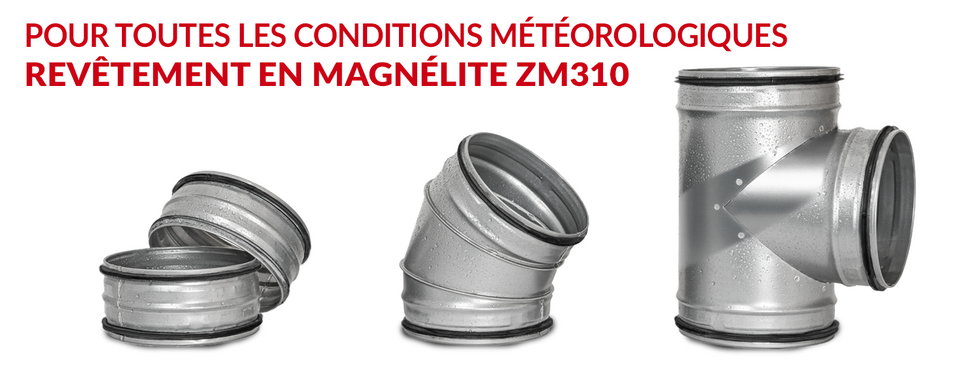
Les produits de ventilation en tôle d'acier revêtue ZM310 sont désormais disponibles dans notre gamme. Ces produits ont une durabilité accrue qui prolonge leur durée de vie, génèrent des coûts d'exploitation plus faibles et sont plus rentables que le zinc post-galvanisé, l'aluminium ou l'acier inoxydable.
Le Spiral System® avec revêtement ZM310 est disponible dans des diamètres de DN 80-500 mm et comprend, entre autres, des gaines, des coudes et des tés, des bouchons, des registres, des jetées de toit et des bases, ainsi que des silencieux.
Les produits sont reconnaissables au symbole ZM dans le code, par exemple BSL-ZM-200-90.